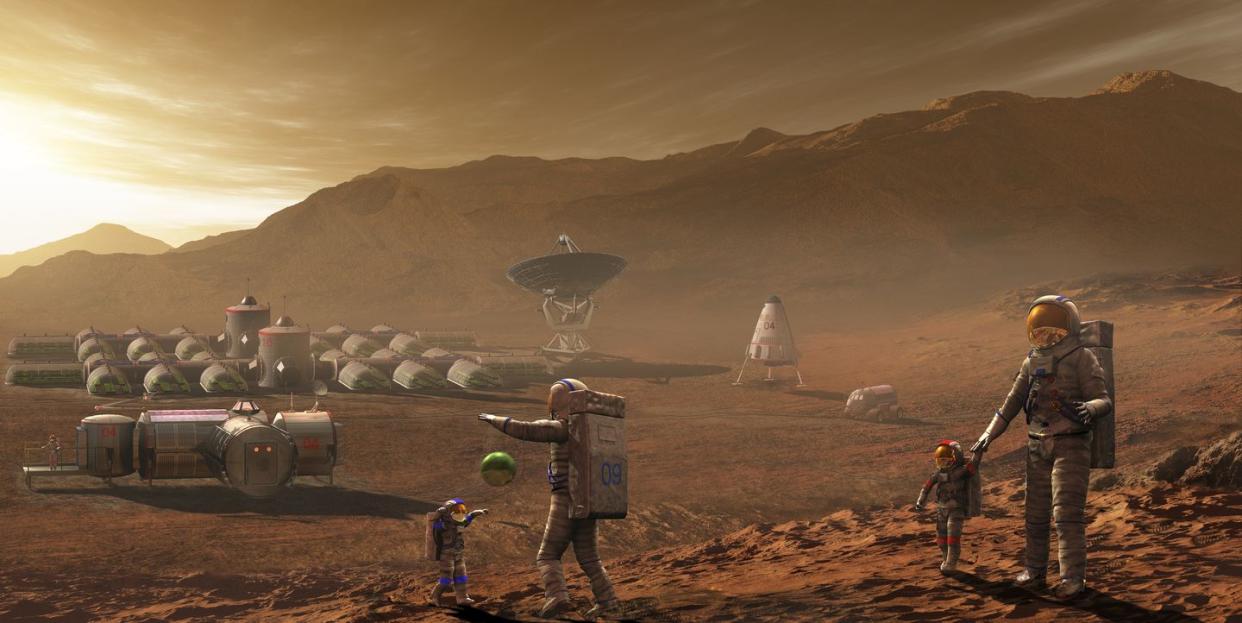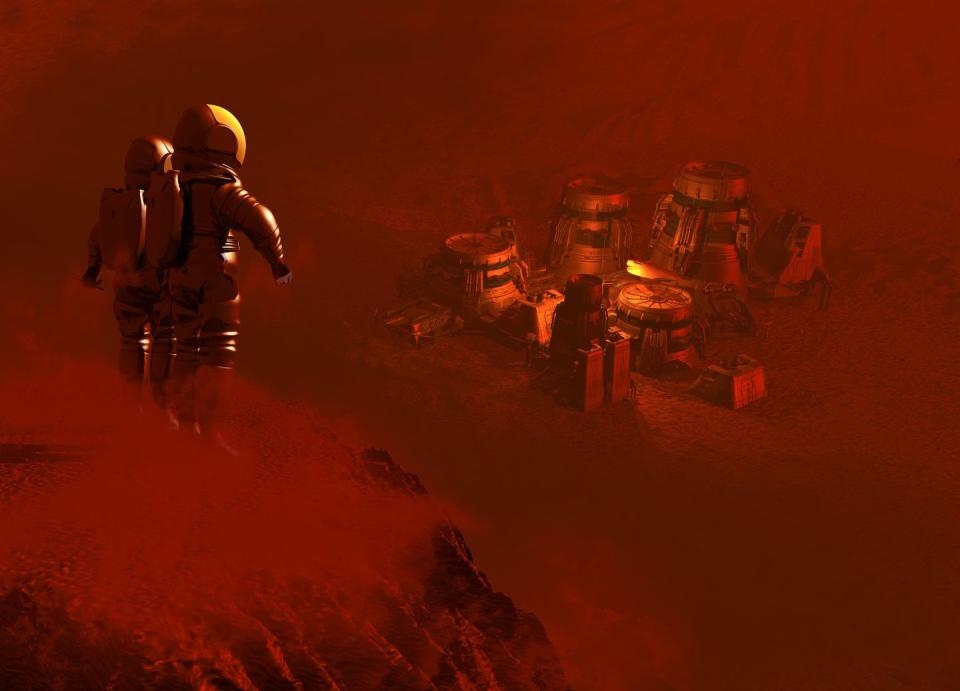NASA Wants You to Pretend-Live on Mars (for Science)

If you're healthy and have a master's degree in a STEM discipline, you could pretend to live on Mars...for research purposes.
NASA is planning a series of three year-long "analog missions" that mimic life on Mars, beginning in fall 2022.
Astronaut substitutes will explore, conduct experiments, and communicate just like real astronauts would on the red planet.
Wannabe astronauts: it's your time to shine. NASA is seeking crew members to live in simulated, Mars-like conditions for a full year beginning in fall 2022.
It's all a part of the space agency's "Crew Health and Performance Exploration Analog" missions, which seek to mimic the real-life challenges of a Martian mission. If selected, you'll live in a 1,700-square-foot module at NASA's Johnson Space Center in Houston, Texas, where you'll support research efforts to come up with new methods and technologies for preventing and resolving "potential problems on future human spaceflight missions to the Moon and Mars."
🛰 You love space. So do we. Let's explore the cosmos together.
And yes, just like other longterm NASA studies (like bedrest research) there is compensation—though NASA isn't very specific about the kind of money you'd make.
So, what does NASA want in a hypothetical Mars resident? Mostly it's the same stuff they want from real-life astronauts:
NASA is looking for healthy, motivated U.S. citizens or permanent residents who are non-smokers, age 30 to 55 years old, and proficient in English for effective communication between crew and mission control. Crew selection will follow standard NASA criteria for astronaut candidate applicants.
Plus, you'll need a master's degree in a STEM field—like engineering, mathematics, biology, physics, or computer science—from an accredited institution with at least two years of professional STEM experience, or a minimum of one thousand hours piloting an aircraft.
That's a big ask, considering it's a similar set of requirements to what you'd see for an actual astronaut job listing, or for a gig at another government group, like the Federal Bureau of Investigation. Clearly, the role is not to be taken lightly, despite the fact that you'll never leave the ground: NASA wants extremely qualified people with skills that are directly applicable to the scientific work of living in a working space habitat. With that in mind, NASA is willing to make meaningful exceptions to some of the requirements. With enough work experience, for example, they'll consider candidates who only have a bachelor's degree.
As for your humble abode? Selected candidates will live in a custom 3D-printed environment for up to four people. There, you will face "resource limitations, equipment failure, communication delays, and other environmental stressors" that astronauts will likely face during a high-stakes Mars mission.
This design choice is intentional: 3D printing has made a significant dent in the perceived obstacles to sending crews to Mars (or the moon) for long periods of time. It answers many of the questions about where people could actually live on the harsh Martian surface, and how they'll manage to bring enough building materials along to cobble together a survivable habitat. The printers work with lightweight materials and carry all of the plans for how to build a habitable structure, removing the mystery and burden from future residents.

To be clear, this opportunity (which will take place over the course of three one-year cycles) is just the latest in a longer series of Mars-like missions designed to test the human factor in space travel. Scientists want to know how well people can tolerate the relative isolation, cramped conditions, and survival activities associated with what we think travel to Mars will be like. So, don't expect it to be easy.
Between 2013 and 2017, for instance, NASA ran analog missions on the side of a volcano in Hawaii (known as HI-SEAS), as documented at Insider, as well as in the Gimlet podcast miniseries "The Habitat". But the difference is that these new simulation missions are taking place in a climate where people like Elon Musk are practically sketching out floor plans for their intended Mars settlements.
This is also the first time in decades that we've been on the cusp of new NASA missions to the moon, during which NASA plans to establish a permanent settlement. "Lessons learned on and around the Moon will prepare NASA to take the next giant leap—sending astronauts to Mars," a press release explains.
For a full list of application requirements, visit www.nasa.gov/chapea/participate.
🎥 Now Watch This:
You Might Also Like
